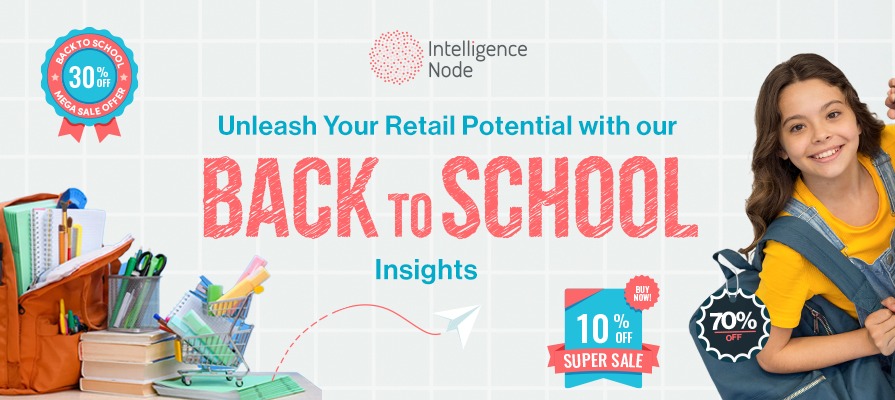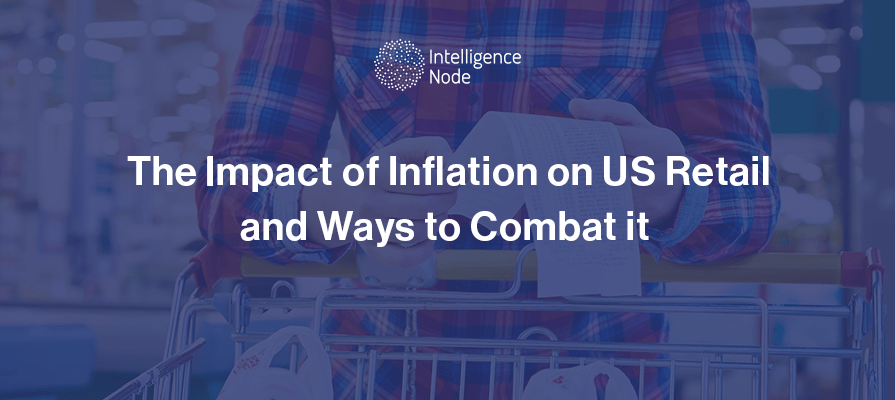The buzz of the back-to-school season has swept across the United States again, with retailers and consumers alike in the midst of one of the most significant shopping periods of the year. This year, Intelligence Node has noted some intriguing shifts in shopping trends and consumer behavior as the season takes shape.
According to Deloitte’s 2023 back-to-school survey, 18 months of inflation have significantly impacted parents’ spending behavior. After enduring higher prices last year during the pandemic’s aftermath, parents are now displaying price sensitivity and reevaluating their shopping approach. Let’s delve into these key trends and statistics shaping the Back to School retail behavior in the US in 2023.
Changing Spending Priorities:
Parents across different income groups are planning to spend less on back-to-school shopping in 2023. Budgets are under strain, prompting consumers to reassess their spending priorities. Amid increasing inflation, families are looking to protect their savings and allocate more of their budget to experiences, like leisure travel- leading experts to preduct total spends to drop by 10% year over year. This shift in priorities is influencing spending decisions during the back-to-school shopping season.
However, despite the decrease in overall spending, back-to-college and back-to-school shopping are still expected to reach record levels in 2023, according to the National Retail Federation (NRF). With prices of school supplies increasing by 23.7% in the past two years, the need for bargains is more pronounced. The value and discount retail sector experienced a noteworthy boost this year, as families proactively seek out deals and discounts. In fact, discount stores and dollar stores have reported a 25% increase in sales compared to last year’s back-to-school season. Consumers anticipate spending substantial amounts during this shopping season, which suggests that while parents may be more cautious with their spending, the overall retail market is still likely to witness significant activity.
The Power of Online Shopping
While brick-and-mortar stores still remain a popular choice for back-to-school shopping, there’s no denying the formidable presence of online retail. With an increase of 15% in online sales compared to the same period in 2022, it’s clear that convenience and the ability to compare prices quickly are winning over many shoppers.
Further, search data indicates that consumers are starting their back-to-school shopping earlier than ever, with a significant uptick in sales beginning as early as late June. This early shopping trend suggests that parents are becoming more proactive in ensuring their children are well-prepared for the school year, a shift possibly influenced by pandemic-related uncertainties and supply chain concerns.
As families prepare for the new academic year, the demand for essential school supplies like textbooks, notebooks, stationery, and backpacks sees a predictable surge. However, this year’s most noteworthy increase in sales has been in the technology segment. With digital learning still very much in the picture, laptops, tablets, and related tech accessories have seen a 20% increase in sales compared to last year, further solidifying the blend of traditional and digital learning environments.
Also Read : Why Walmart’s EDLP Strategy is a Game-changer
Impact of Social Media on Shopping:
In recent years, social media has emerged as a powerful influence on consumer shopping behavior. A survey conducted in 2022 showed that roughly 35% of parents planned to use social media websites to assist them during their back-to-school shopping. This trend highlights the growing role of social media platforms in product discovery, deals, and recommendations during the back-to-school season. Further, social media platforms showcase growing trends and new brands, allowing parents and students to explore new categories of products. For example, the STEM (science, technology, engineering, and mathematics) market is growing rapidly, and this is reflected in the back-to-school market. Parents are increasingly looking for STEM-related products for their children, such as educational toys and games.
Finally, sustainability is more than just a buzzword in 2023. It’s a definitive consumer preference, as illustrated by the increased sales of eco-friendly school supplies. Items such as recycled notebooks, biodegradable pens and pencils, and sustainable backpacks have seen a 30% increase in sales, demonstrating a clear consumer demand for products that minimize harm to the environment.
How US eCommerce Players Can Win:
In light of the changing landscape, US eCommerce players need to adapt their strategies to cater to price-sensitive consumers. Offering attractive deals, discounts, and promotions will be crucial to attracting shoppers during the back-to-school season. Using Intelligence Node’s Pricing capabilities can enable the players to provide the most competitive price offerings, while ensuring that their margins are maximized. Leveraging social media platforms for marketing campaigns and engaging with potential customers will provide an edge in this competitive market.
While parents focus on replenishing school supplies, eCommerce players can create value by offering curated bundles and deals on essential items. Emphasizing convenience, fast shipping, and user-friendly website experiences will enhance customer satisfaction and loyalty. Despite the growth of online shopping, consumers still appreciate an omnichannel shopping experience. Buy online, pick up in-store (BOPIS) services, and curbside pickups have seen a substantial increase, indicating that consumers value the convenience of online shopping while still benefiting from the immediacy of physical retail.
The back-to-school market in 2023 presents both challenges and opportunities for US eCommerce players. By understanding consumer sentiment and aligning their offerings accordingly, retailers can navigate this unique landscape successfully.
Conclusion
This back-to-school season has demonstrated that consumer behavior continues to evolve in response to broader socio-economic factors. From a surge in technology sales to the increased demand for sustainable products, 2023’s trends provide valuable insights for retailers to prepare for future seasons.
As we navigate through this dynamic landscape, it’s evident that the successful retailer is one who can understand and quickly adapt to these changing trends, offering consumers a seamless shopping experience whether in-store, online, or both. Intelligence Node will continue to monitor these trends, providing you with the data and insights you need to stay ahead of the curve. To learn more about optimizing your eCommerce stores for modern retail, book a demo with us today!




